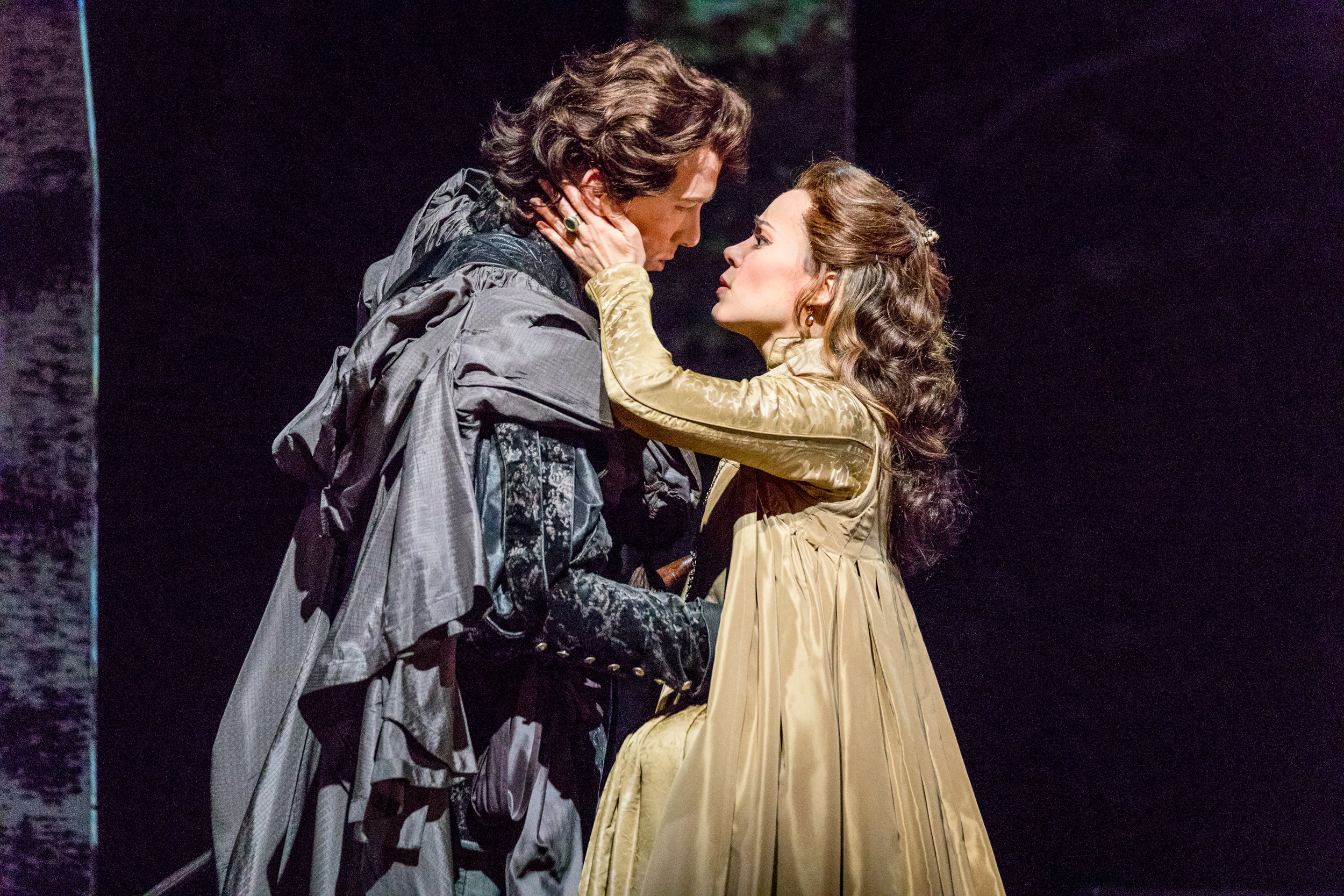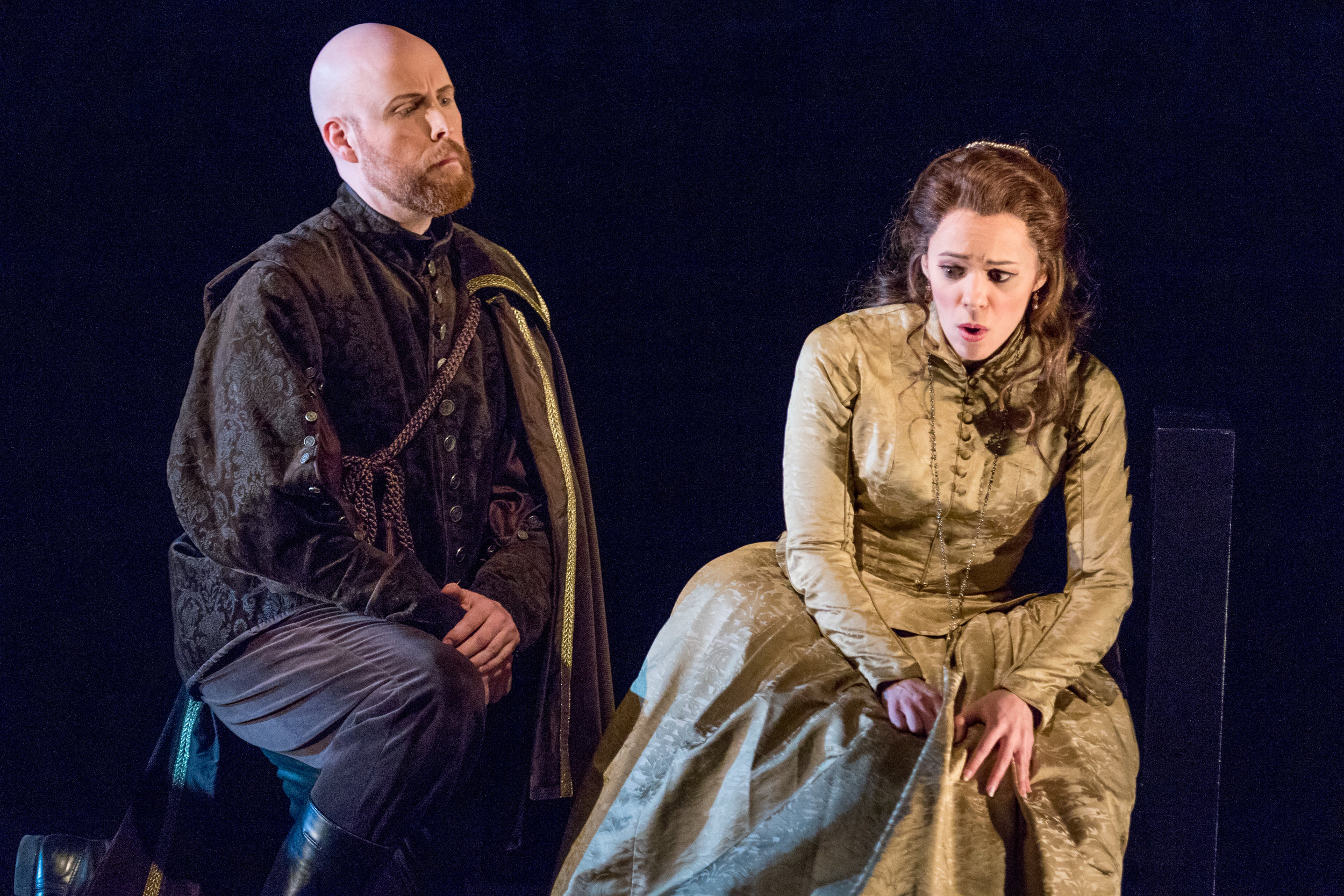If you are an opera fan, Donizetti’s Lucia di Lammermoor is one of the classic operas to check off your list and repeat as opportunity arises, which can lead to memory difficulties. I have a suggestion. An opera, of course, is not about one performer, even when it’s the lead soprano, but for Donizetti’s Lucia di Lammermoor, the soprano playing Lucia is critical. I suggest we start giving each production the name of the soprano – a Lucia di Lammermoor with Joan Sutherland for example would be known as Joan di Lammermoor. I think this would make it easier to rank and remember our favorites. I loved Natalie di Lammermoor (Natalie Dessay), but wish I had seen Maria di Lammermoor (Maria Callas), for example. It could even help in drawing distinctions: La Scala’s Maria di Lammermoor was better than Covent Garden’s Maria di Lammermoor. Thus, to help all our memories, Virginia Opera’s current Lucia di Lammermoor should be remembered by its fans as Rachele di Lammermoor (for coloratura soprano Rachele Gilmore). It will be a fond memory; I thoroughly enjoyed Sunday (April 8) afternoon’s performance.
Rachele Gilmore as Lucia in the famous mad scene. Photo by Ben Schill Photography; courtesy of Virginia Opera.
Partly, I had looked forward to VO’s Lucia due to a conversation I had with Director Kyle Lang about costumes and staging for this opera, which I reported in a previous blog post. This bel canto opera by composer Gaetano Donizetti and librettist Salvatore Cammarano deals with a couple, Lucia and Edgardo, from rival families who fall in love with each other. Lucia’s brother, Enrico, and his entourage, including the chaplain, Raimondo, force Lucia into a politically advantageous marriage with Arturo while Edgardo is away. The abandonment and stress pushes Lucia into madness. The sumptuous period costumes by noted designer Catherine Zuber are an outstanding element of the opera, and the sets conceived by Mr. Lang which he described as minimalist (everything plays a role in telling the story) were very effective in providing appropriate backdrops for the story. I especially liked the lighting effects in Act I to portray the forest in shimmering moonlight, and I am still amazed at how effectively the ballroom set conveyed a spacious ballroom. Each scene beginning with the forest scene was introduced by a short film clip created by Mr. Lang that escorted the audience into the mood of the scene. I enjoyed these and think maybe even more could be done with such mixing. One drawback to the staging on Sunday was the rather prolonged “short pause” between the mad scene and the final scene in the cemetery; also, the moving of heavy sets at that point caused some groaning sounds creating ripples of laughter in the audience, a minor quibble, but a noticeable drop off in tension resulted.
left: Joseph Dennis as Edgardo and Rachele Gilmore as Lucia. right: Tim Mix as Enrico and Rachele Gilmore as Lucia. Photos by Ben Schill Photography; courtesy of Virginia Opera.
For me the sound of the singer’s voice is critical to my enjoyment of the singing. Rachele Gilmore has a very pretty soprano voice and to my ear, sings beautifully, especially when dancing around in the higher registers. Sometimes her trills seemed to me more workman-like than natural, but I would gladly listen to her sing Donizetti again anytime. Her acting and singing seemed to keep within the bel canto tradition, always under control, though Lucia might be expected to lose it sometimes and sometimes be fighting to regain her sanity or to evade it. One might permit her a scream or two. Her poignant mad scene will be one I remember to compare with others. I expected Ms. Gilmore to be excellent, but two of the singers surprised me. Joseph Dennis as Edgardo was a delight; he has a fine tenor voice and plays his role well. The other surprise was Richard Ollarsaba who played the chaplain Raimondo. I was impressed with Mr. Ollarsaba in his performances as a young artist with Wolf Trap Opera, but his strong, resonant bass-baritone and stage presence now are commanding the stage. Tim Mix as Enrico has a pleasant baritone voice and played the narcissistic brother well, though he seemed more in character with moments of comfort to Lucia than expressing his rage and cruelty; his irate shoves to his comrades in the forest scene were rather gentle; if any had tipped I think he would have had a pillow under them before they landed. The other principal cast members were all effective in supporting roles, mezzo-soprano Melisa Bonetti as Lucia’s companion Alisa, tenor Bille Bruley as Arturo, and tenor Stephen Carroll as Normano, an assistant to Enrico. Special kudos to the chorus, led by Chorus Master Shelby Rhoades; their sound is beautiful and worth going to hear alone. Also, not just the individual arias but the duets and ensemble singing, including the famous Act II sextet, were all immensely enjoyable.
Perhaps the best reason to attend Lucia is Donizetti's sumptuous music. Maestro Ari Pelto and the fifty-three piece Richmond Symphony gave us a good rendition of Donizetti with full support of the singers and drama. The overture's opening which sounds like a funeral march, the repetition of lyrical themes, and emotional shadings all added to the opera's dramatic impact; the employment of the harp and flute/Lucia duet added to the delights.
Watching just my second Lucia, I became somewhat amused by thinking that if the Donizetti/Cammarano team were alive today, the murder scene would not take place unseen off stage, but would be the center piece of the opera, complete with a nude scene. Today’s audiences would demand it. So, enjoy this, even if sad, return to the good old days.
The Fan Experience: I am finding that where you sit in the Center for the Arts auditorium at GMU significantly affects the sound you hear. My advice is to seek out the center and, if in the orchestra section, farther back is better. I also detect a disproportionately large drop off in singer sound volume when they move from front stage to rear stage; something perhaps for directors to note for staging purposes.
In addition to opera fans, I also recommend Lucia for newbies, though not for those not yet into their teen years. There are still two performances left for Rachele di Lammermoor, both in Richmond, on Friday evening, April 13, and a Sunday matinee, April 15. If you arrive at least 45 minutes early, you can hear the entertaining and enlightening pre-opera talk by Dr. Glenn Winters, Virginia Opera's Community Outreach Musical Director, which will enhance your appreciation and enjoyment of the opera.



